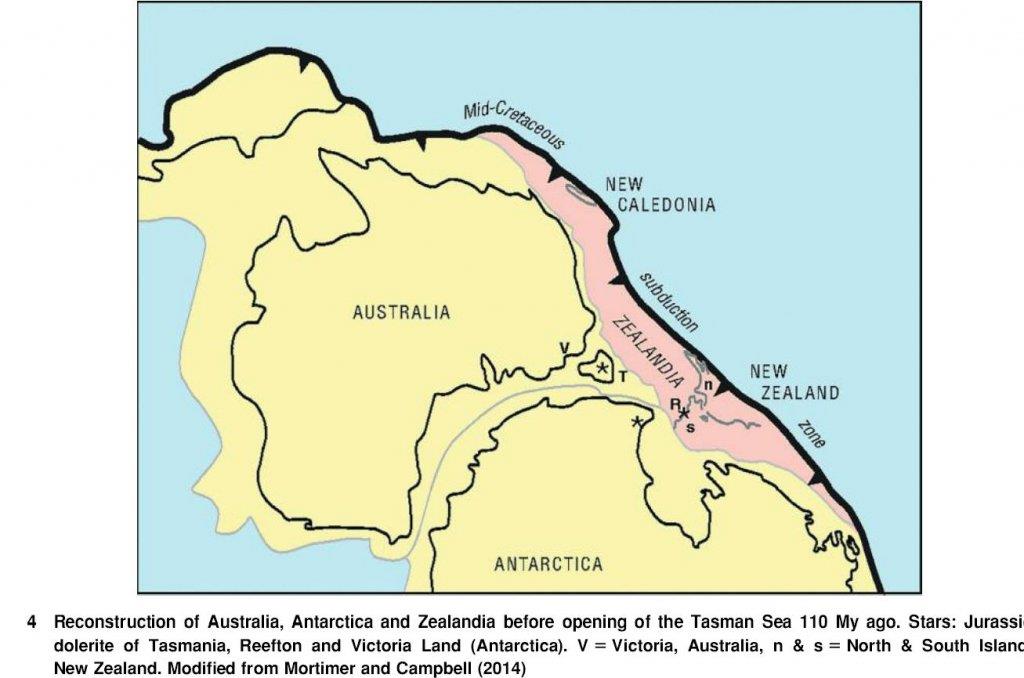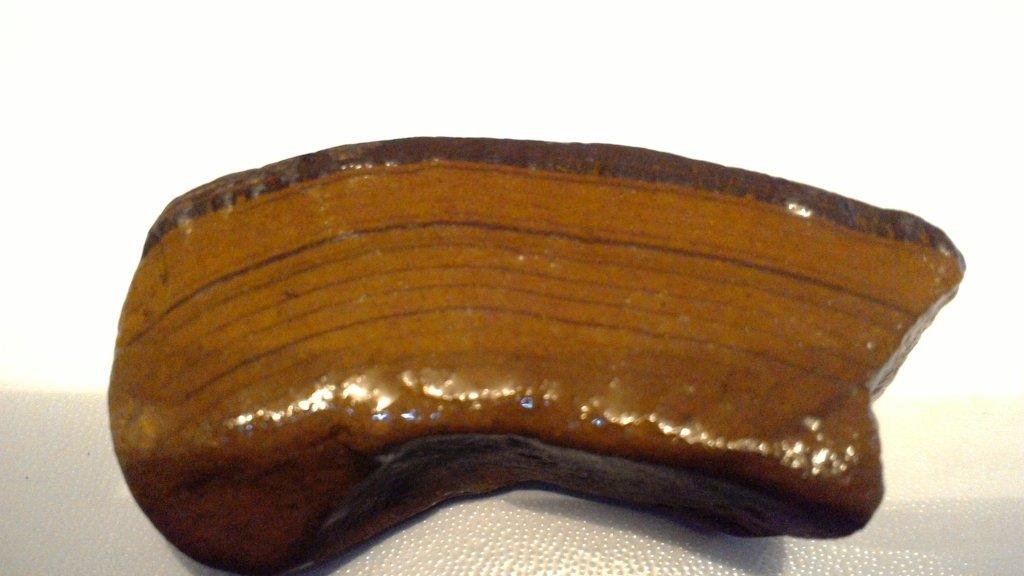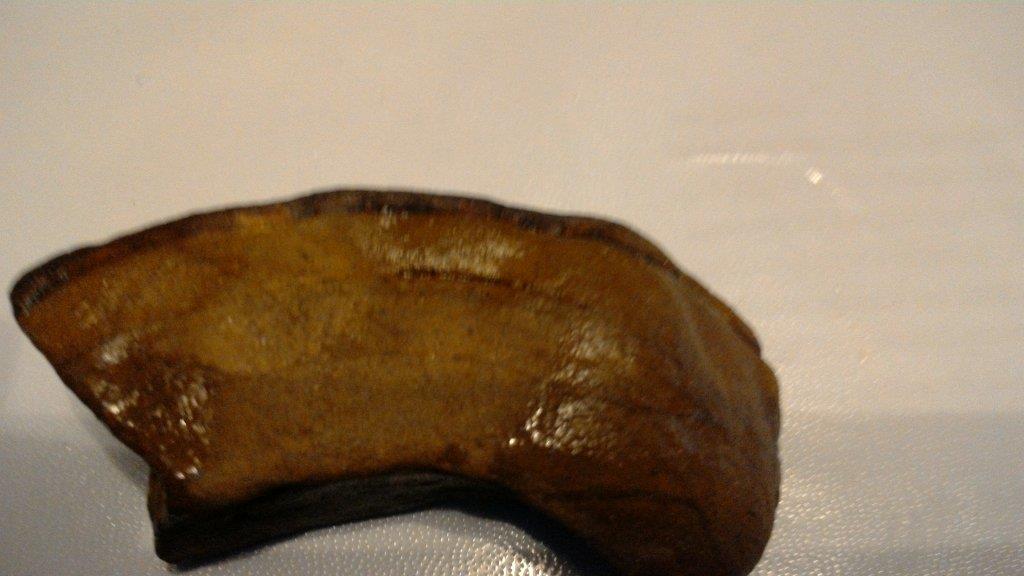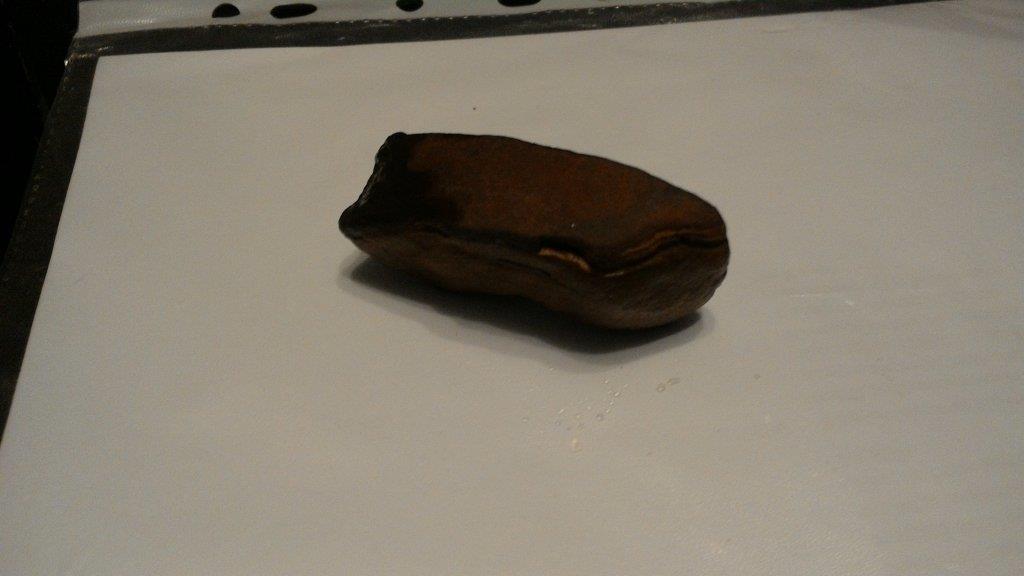[Lefty]Dunno, I'm no longer the Rock God, I've been downgraded remember

But can tell you from firsthand fossicking experience (jn this neck of the woods at least) that petrified wood is particularly abundant in river gravels that run through fields of extinct volcanic plugs - you could fill a 44-gallon with it drum at Riverslea crossing and some has veins filled with agate. Conversely, I've found little or none on the gravel banks of streams where no such formations exist. Certainly, other fossickers have told me of similar situations about the countryside so there does appear to be a relationship - even if it not a necessary one.
Yes, but when a spatial relationship it is not necessarily a genetic one. One reason for the relationship when it exists can be this. The spatial relationship can be that fossil gravels tend to be eroded away rapidly unless something protects them, and lavas provide good protection, so the gravels under lavas are last to erode away, after the lavas have mostly gone. Volcanic plugs are usually associated with pyroclastics and lavas ejected from those plugs (you mention ejected material). However as I mentioned, these gemstones CAN form near lavas (and near volcanic necks, and in them) - I mentioned opal in volcanics in New England, I meant the New England region which is not just NSW but includes up to your way. Sometimes it is from hot water from the volcanism, and that is usually in veins or vesicles within the lavas, regardless of whether they are rhyolitic or basaltic Sometimes even this is mostly rainwater that becomes groundwater that gets heated by the volcanic activity. More commonly it is from silica released from basaltic lava later during weathering - rhyolite 200 My old will often still ring like a bell and be little weathered (it consists mostly of quartz and feldspar), but basalt 1 My old can be weathered to brown clay and iron oxide (basalts consists of things like volcanic glass and olivine or pyroxene which rapidly weather to release silica as they convert to Mg clays - smectites). You obviously like to know about what you fossick, and know what you are talking about, so I have attached a paper on your area for your interest. Obviosly I am not familiar enough with your area to put my chop on a block about its origin.
While the opal coming from Australia's opal fields does not appear of volcanic origin, it certainly appears to be in other places. Welo opal from Ethiopa is such an opal - some is very beautiful stuff but also appears to be easily treated to enhance it's appearance or emulate black opal. So I have no reason to doubt the origins stated to me by a person who showed be a piece of blue pinfire-type opal that he said came from a volcanic area not far from me. I didn't ask him if I could stick it on my tongue to try and determine if it was hydrophane  In our monsoonal climate versus the arid Ethiopian site, it would probably be full of water anyway.
In our monsoonal climate versus the arid Ethiopian site, it would probably be full of water anyway.
Dead right - Australia is the only place in the world to have precious opal that is NOT of volcanic origin (most here is not). Hungary, Mexico, central America, Brazil are examples - precious opal of any type has never been recorded from southern Africa. Most do not look like our opal (eg orange Mexican and Hungarian fire opal, the pure jelly opal of central America with a matrix as perfectly clear as window-glass- the closest I have seen is Brazil which is like our non-black opal. Keep in mind that Australia's climate has not always been monsoonal, although it was probably quite wet and drying out when most opal formed (as I mentioned for South Australia). More like western Tasmania where it is bloody cold now but they still get as much rain as Tully - Australia was still travelling north from the South Pole at the time. Victoria and areas east of the Flinders had similar Nothofagus (Southern Beach) forests as far north as Broken Hill only a million years ago (it actually started drying in the Tertiary and Nothofagus disappeared from the mainland but suddenly went wet again in the Pliocene (at 2 My) and has gone dry again, surviving in Tasmania and a few south-facing ullies in Victoria. The wood was found in the gold deep leads and they used to make walking sticks out of them in Ballarat (I'd love one for my final years).
Sounds like all the fossil wood I've ever picked up is that 0.1% then - which must make it rarer than nearly all other petrified wood, which means no more just giving bits away, I want a couple of hundred bucks a kilo at least :lol:
Not necessarily - it could be any of the three in your area - (i) directly formed from hot water formed when the volcanoes were erupting (least likely unless actually in the volcanics), (ii) water flowing through the weathering volcanics at a later date when the volcanoes were long dead (and into the gravels below) - which is more common but depends on the areea - or (iii) silica-rich groundwater not of volcanic origin simply flowing through gravels and unrelated to nearby volcanic plugs (by far the most common overall, but it depends on the area). The 0.1% I mentioned was more the first. One reason the first origin is rare is that silica in hot water of volcanic origin rapidly precipitates at surface, so is usually confined to the volcanic rock and would be largely gone by the time the water entered near-surface gravel (although it can occur if entering from below). The precious opal from New England is mostly full of water (the type you hear cracking as you drive back to camp at night, like Stuart Creek) so little reaches the market (what I meant by 0.1%). There is actually very little water in molten basalt lava and it dumps its silica rapidly (eg 50% of its water dumps as it cools from 300 to 200 degrees, so by surface it is mostly gone except where the water emerges.
My mates (and I ) work in all of South Australia, western Queensland, SE NT, northern SW and much of Victoria and some of Tasmania.
I promise, you won't bore me - I'm always keen to learn more about this stuff. One of the geo's I talk to favours the subduction zone theory for the formation of our sapphires, which is why they occur all up and down the east coast/subcoastal areas. Most deposits are not remotely on the scale of the Anakie or New England fields but they are there.
I agree completely that they come out of the volcanics, as do large zircons - there is a quarry near me (Daylesford) with zircons to a centimetre (perfect crystal forms) embedded in basalt still, a lake south of here entirely in basalt which has zircon gravel. Not so sure re the NSW diamonds but I thought they were subduction type and young (formed from organic carbon sundected with the slab, different to most diamonds like SAfrica or Argyle that formed 3 By ago and have sat in the mantle since until later blasted to surface). I slightly disagree re that subduction story but that is a complicated story and geos often have to simplify so the complexity gets lost - it is bloody complex - it is possibly more indirectly related, in much the way that the basalts of Auckland are related to the North Island being in tension well west of the subduction zone (because of the subduction) so lavas there rise from the mantle. The lavas related to the subduction are further east and mostly rhyolite (Taupo etc) and related to the downgoing slab, the subduction is occuring still further east off the east coast. Eastern Australia is more complex again, as we had this as well up until about Cretaceous times. However most of the volcanoes of younger age in eastern Australia are thought to be "hot spot" related by many (not all) geos, not subduction, and the sapphires and rubies and many zircons are ascribed to them. A hot spot is different, it rises possibly from as deep as the core-mantle boundary and is stationary (SOuth Africa has lots of diamonds because it has been pinned by three hot spots since the Cretaceous - Ethiopia, Tristan de Cunha and the Karoo - and unable to migrate away from them - it has no subduction boundaries since then unlike other continents (Australia has one with Timor). However because Australia was moving north and the hot spot was stationary, it formed a line of volcanoes from north of the Glasshouse Montains to Mt Gambier, those in the north being oldest, those at Mt Gambier youngest (the aborigines record the 4000 year old eruptions there, and there is still molten magma at depth under Bass Strait). This line parallel to Australia's northward movement is parallel to but mostly slightly west of the older subduction line, which occurred along the entire Australian coast in the Cambrian to Devonian from Tasmania up to the Sydney Basin, and from the Sydney Basin to the tip of Cape York from the Devonian to the Cretaceous. Only from the Cretaceous did this cease and Australia start splitting from Antarctica and moving north, with NZ splitting from both. It is further complicated by a line of similar "alkaline" intrusions of Jurassic-Cretaceous age close to the coast (eg Qld, Mt Dromedary in NSW and Cygnet in Tasmania but closer to the coast - probably a bit extensional but indirectly caused by subduction like the Auckland examples - caused by tensional cracking above the subducting plate but coming from the mantle or deeper and not from subducting plate like those explosive volcanoes further east). Keep in mind that our fiery volcanoes up until the Cretaceous are now mostly underwater between Australia and New Caledonia (which was our Cretaceous subduction zone)- in the Cretaceous the Tasman sea opened and New Zealand rifted away along with New Caledonia and the submarine rise on which isolated volcanic islands like Lord Howe sit. It used to look like this (from Hughes and Phillips 2015) - all the yellow and pink was one continuous continent:

Overdosed yet?










